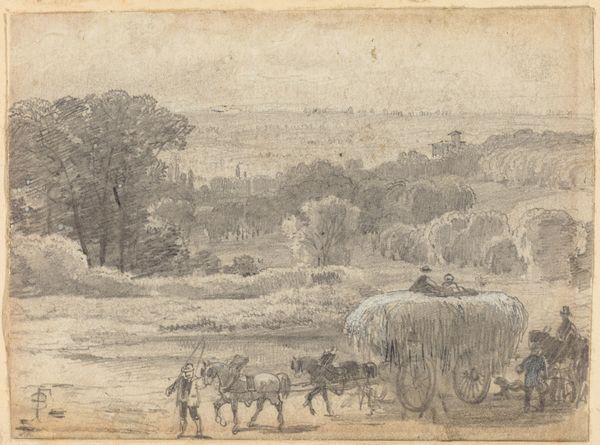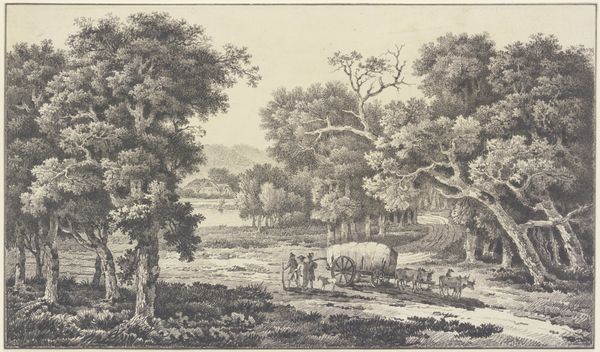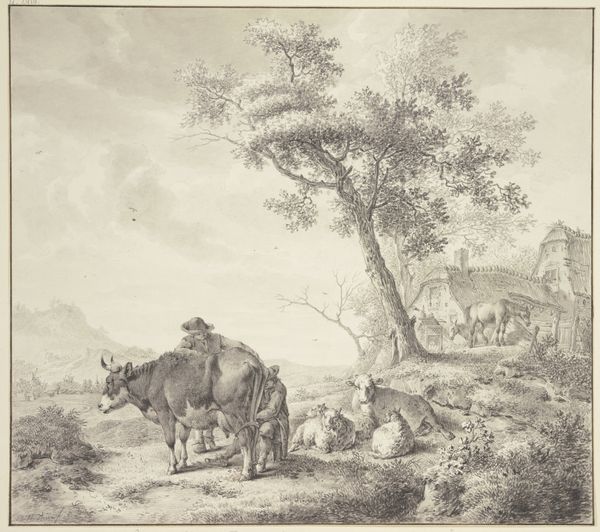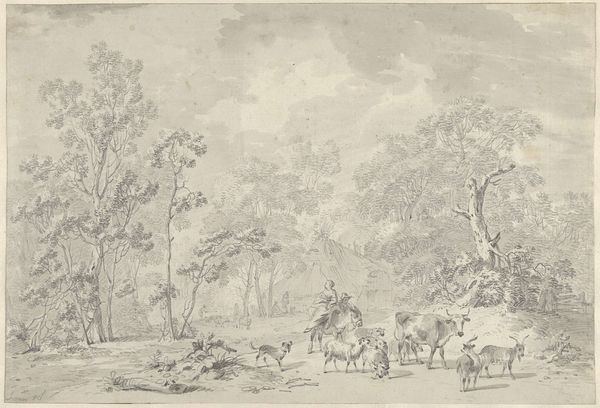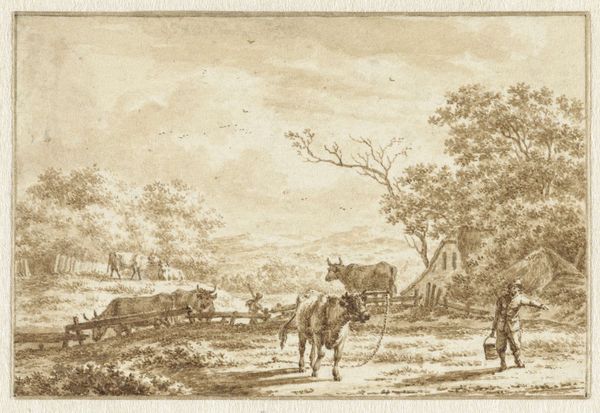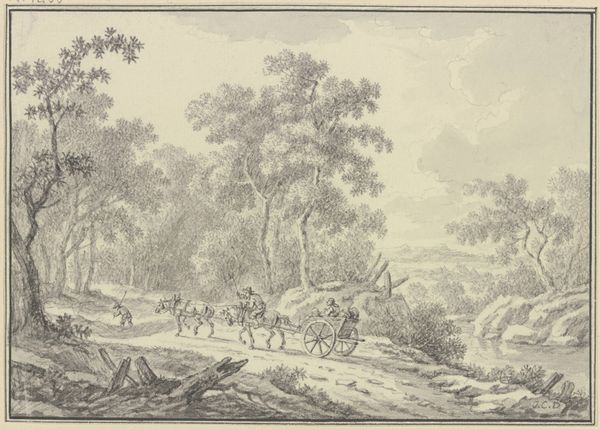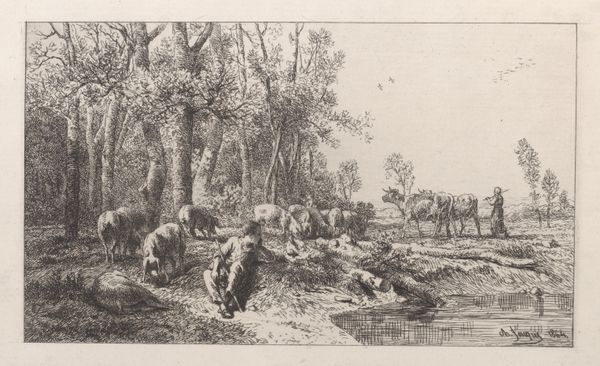
drawing, etching, ink
#
drawing
#
baroque
#
ink painting
#
etching
#
landscape
#
etching
#
ink
#
genre-painting
#
italian-renaissance
Copyright: Public Domain
Curator: This delicate etching, created in 1667, is by Nicolaes Berchem and it's entitled "t'Huys te Brederode, vorn eine Kuhherde mit einer Melkerin," currently held at the Städel Museum. Editor: Immediately, I’m struck by its tranquil yet melancholy mood. The sepia tones give it an aged feel, and the composition, especially the ruined structure in the background, speaks of lost grandeur. Curator: Indeed. Berchem, known for his Italianate landscapes, often depicted ruins to evoke a sense of history and the passage of time, reflecting a broader fascination with classical antiquity among Dutch artists. His Italianate style often presented idealized versions of peasant life, heavily influenced by a romantic perception of Southern European existence. Editor: I see that now. These cows are so still, almost posing; they bring attention to the milkmaid and a seemingly effortless bucolic ideal, even while the ruin looms large in the background. What commentary might the artwork bring to its era, do you think? Curator: This kind of genre scene gained popularity as urban life grew; a stark difference with what these genre paintings evoked. The contrast between decay and present life, reflected the political tensions of the time with ongoing struggles between social classes as rural life faced the change and advance of urban cities. Editor: It's interesting how even scenes that appear idyllic can carry such complex social and political weight. Thinking about that female figure, I wonder if she symbolizes something about labor, or perhaps a subtle challenge to established societal structures through its seeming inconsequential place in the painting? Curator: Possibly. Genre painting often relegated working class figures, particularly women, to symbolic roles tied to fertility and domesticity rather than individuality or political significance. A milkmaid is part of a symbolic scene; therefore her significance is less relevant in the whole composition. Editor: That distinction is very helpful for understanding its original and continued meanings, so thanks. Curator: Of course. The Dutch Golden Age saw its genre art reflecting on shifting societal values as it became enmeshed with trade and expanding overseas engagements. I do wonder, how its visual dialogue may have shaped Dutch views of land and labor back then. Editor: Reflecting on our talk, it really makes me appreciate the visual stories an artist conveys within these landscapes. It brings nuance into what one can think about an artist's purpose, so the past is never too far from our present reality.
Comments
No comments
Be the first to comment and join the conversation on the ultimate creative platform.
